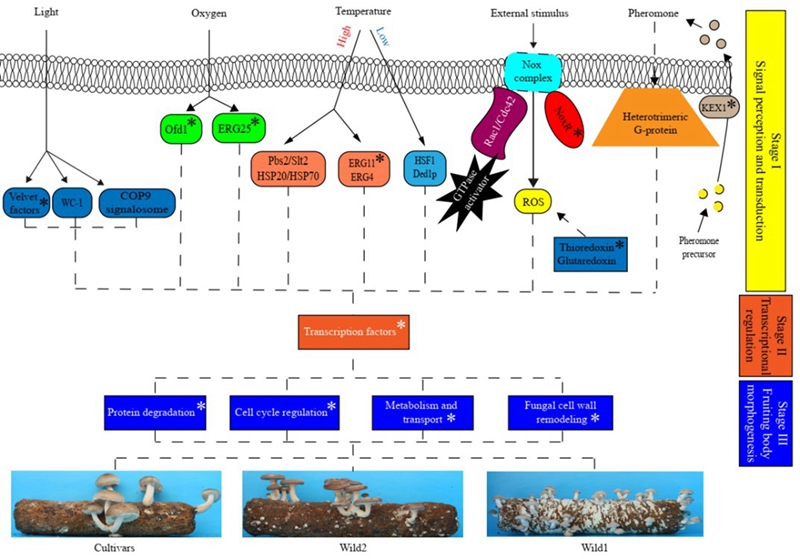Prof. Bian Yinbing and his research team from the College of Plant Science and Technology published a paper entitled “Population genomics provides insights into the genetic basis of adaptive evolution in the mushroom-forming fungus Lentinula edodes”. For the first time, they adopted the population genomics approach to explore the evolutionary history of edible fungi of economic importance and dissected the genetic basis of the adaptive evolution in L. edodes. Their findings will provide critical references for the breeding and selection of excellent varieties of L. edodes.
L. edodes is now the world's leading cultivated edible mushroom with about 22% of the world's supply among all domesticated mushrooms. Both environmental adaptation and natural selection can drive the evolution of the L. edodes genome. However, little is known about the connections among genotype, phenotype and adaptation. The team conducted genome resequencing and cultivation experiments in 133 L. edodes strains. They detected three distinct subgroups, which showed robust phenotypic and temperature response differentiation and correlation with geographical distribution. The subgroups diverged 36,871 generations ago. The modern L. edodes cultivars may originate from the vicinity of Northeast China.

L. edodes genetic and phenotypic differentiation model in adaptive evolution Photo/HZAU
Integrating results of genomic scan and genome-wide association study (GWAS), the team unveiled a large number of candidate genes related to genetic and phenotypic differentiation among populations. Among them, genes related to environmental response, signal transduction, transcriptional regulation, cell cycle regulation, fungal cell wall remodeling, protein degradation, and metabolism and transport are particularly important. Through transcriptome studies combined with fruiting body development, they found that a considerable part of population differentiation-related genes are involved in the process of fruit body development. Furthermore, the team modeled genetic divergence and phenotypic differentiation of L. edodes in adaptive evolution. The results showed that the local environment, especially temperature, triggered the genetic and phenotypic differentiation of the L. edodes populations.
They further combined genomic, genetic, and phenotypic data to analyze the genetic basis of the related traits of L. edodes fruiting bodies, deepen the understanding of the mushroom-forming fungus development, and map an ultra-high-density genetic linkage of L. edodes. They also located 29 QTLs associated with traits related to fruiting body and 3 genomic hot spots. By using meta-QTL analysis to detect 7 pleiotropic QTLs and regulating the phenotypic correlation between fruiting body-related traits, they explored 33 important candidate genes regulating fruiting body development.
Source: http://news.hzau.edu.cn/2021/1001/61507.shtml
Translated by: Liu Shuying
Proofread by:Guo Haiyan